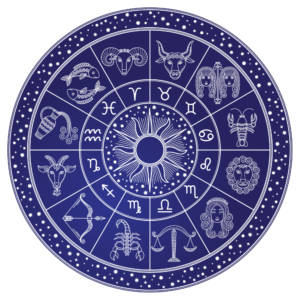
Astrologers believe that each part of our birth charts tells us about ourselves and our lives. Taking a closer look at your sign can reveal some surprises.
Peruse astrology websites or hang around some enthusiasts and you’re likely to encounter a lot of discussions about rising signs. Perhaps you’ve pulled up your birth chart to find out your rising sign or heard the term “chart ruler” tossed around. Yet what does this all mean? Answering that question involves some science, geography, and a peek into the human psyche.
What Is Your Rising Sign?
Your birth chart shows quite a bit of information. Mastering the Zodiac briefly explains what each detail means, focusing on four primary elements: the Sun, the Moon, the rising sign, and the chart ruler. Mastering the Zodiac and other astrology sources sometimes refer to the rising sign as the “ascendant,” but it’s more than just a fancier word for the same concept. As Astrostyle reveals, it’s the zodiac sign that’s ascending above the eastern horizon at the time each person is born.
As you may already know, some planets and points change position more slowly than others. Consider our Moon, which makes its trip around the Earth in only 27 days. With such a short orbital period, our speedy satellite stays in each zodiac sign for only 2.5 days. The ascendant changes signs even faster than that. Depending on a location’s latitude, each sign takes anywhere between 30 minutes and three hours to cross the horizon. The earth’s axial tilt of 23.5 degrees also causes these differences, with the ascendant jumping 180 degrees or disappearing completely in extreme northern and southern locations.
Because of how quickly the rising sign changes, finding it requires knowing a precise time and place of birth. Even twins born a minute apart can have different ascendants if a sign finishes crossing the horizon before the younger one is born. If you’re not sure about your ascendant, check your birth certificate to get an accurate time of birth. You can plug this data into any free birth chart generator to see your results.
What Your Ascendant Means
You may have heard that our ascendants represent the masks that we wear, the faces that we choose to show to the world. This is one basic interpretation, but Astrostyle adds that it’s the sign of first impressions. The way you dress, your interpersonal style, your demeanor, and even how you style your hair are connected to your rising sign. It adds another layer to how you can be perceived by others. Astrologers often say that it’s one possible reason you could be mistaken for a zodiac signifier other than the one under which you were born.
Mastering the Zodiac suggests additional meanings for you. While it may speak to how you present yourself to others, it can also reveal the qualities you’re developing as you age. If we look at both points of view, the ascendant represents both the personality you show to others as well as the personality shaped by your life experiences.
Your Rising Sign and Chart Ruler
The rising sign has another important function: determining the chart ruler. In astrology-speak, the chart ruler is simply the ruling planet of your rising sign. For instance, someone with an Aries ascendant has Mars as a chart ruler. This planet exerts its influence over the entire natal chart in areas such as personality, goals, desires, and strategies for learning, relating to others, and solving problems. In our Aries ascendant example, Mars will significantly impact whatever signs and houses it’s in. This individual may love competition, testing oneself, and pushing the limits.
Astrologers believe that each part of our birth charts tells us about ourselves and our lives. The rising sign represents the impression we make on others, but it also speaks to central life themes. Taking a deeper look at your ascendant can reveal some surprising details.



